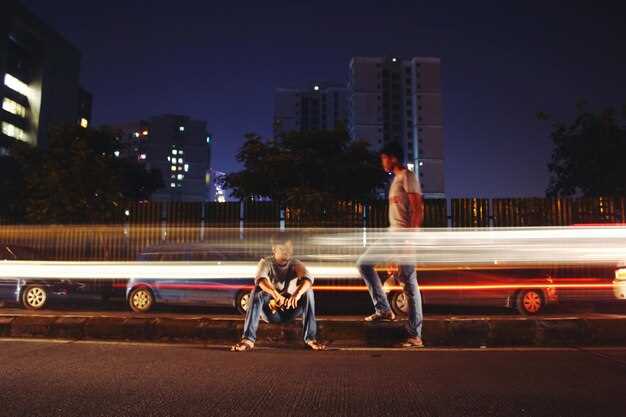
When it comes to night racing, ensuring optimal visibility is crucial for both safety and performance. As the sun sets and the track transforms, the significance of appropriate lighting cannot be overstated. Upgrading your night race lighting can mean the difference between a seamless ride and a hazardous experience.
One of the most effective ways to enhance your night race visibility is by incorporating LED lights. Known for their efficiency and brightness, LED lights not only illuminate the track ahead but also provide extended lifespans and lower energy consumption compared to traditional lighting options. By making this upgrade, you can significantly improve your perception of the racing environment, allowing for quicker reactions and better decision-making in the heat of the moment.
In this article, we will explore the various advantages of LED lighting and how it can transform your night racing experience. With the right approach, you’ll be well on your way to achieving unparalleled visibility, making your nighttime races not just safer, but also more exhilarating.
Choosing the Right LED Lights for Your Night Race Setup
When it comes to enhancing visibility during night races, choosing the right LED lights is crucial. LEDs offer significant advantages over traditional lighting options, including higher efficiency, longer lifespan, and better illumination quality. To maximize these benefits, it’s important to understand the specific requirements of your night race environment.
First, consider the brightness level required for your setup. Measured in lumens, the brightness should be adequate to illuminate the racing track as well as surrounding areas. A higher lumen count ensures that every corner and obstacle is clearly visible, enhancing safety and performance during the race.
Next, focus on the beam pattern of the LED lights. Some lights provide a narrow beam, ideal for focused illumination, while others offer a wider spread for coverage. For racing setups, a combination of both can be beneficial, allowing visibility on both the track and nearby spaces.
Additionally, evaluate the color temperature of the LED lights. A cooler color temperature, typically around 5000K to 6000K, mimics daylight and improves visibility in dark conditions. This option helps racers maintain focus and reduces eye fatigue, essential for endurance during long night races.
Lastly, ensure that the LED lights are durable and weather-resistant. Night races can encounter various weather conditions, making it vital to select lights that withstand rain and wind. Investing in high-quality, rugged LED lights will ensure continuous performance and reliability throughout the event.
Optimizing Light Placement for Maximum Visibility on the Track
Effective light placement is crucial for enhancing visibility during night races. The strategic positioning of lights can significantly impact the perception of track layout, enabling drivers to navigate safely and confidently. Utilizing LED lights is an excellent choice due to their brightness, energy efficiency, and longer lifespan compared to traditional lighting options.
To achieve optimal illumination, start by assessing the track’s unique features, such as curves, elevation changes, and potential blind spots. Install lights at critical turning points and areas with limited visibility to ensure that drivers can anticipate necessary maneuvers. Positioning lights in a staggered formation along the track helps distribute light evenly, minimizing shadows and reducing glare.
Consider the height of the lights; elevated fixtures provide a broader coverage area while reducing the chances of obstructions. However, balance the height with the intensity of the lights to avoid overly bright spots that can distract drivers. LED floodlights are particularly effective in providing uniform illumination across the entire track surface.
It’s also important to incorporate adjustable positioning features to fine-tune the angle and direction of the lights. This flexibility allows for modifications based on track conditions and surrounding environments, ensuring that visibility remains uncompromised. Regular maintenance checks will help in identifying any malfunctioning lights, keeping the track well-lit and safe for all participants.
By prioritizing effective light placement strategies and leveraging the advantages of LED technology, racing organizers can create a well-illuminated track that enhances driver safety and improves the overall racing experience.
Maintaining and Troubleshooting LED Lighting for Night Races

Proper maintenance and troubleshooting of LED lighting are essential for ensuring optimal visibility during night races. Below are some tips and guidelines to keep your LED lights functioning effectively.
Regular Maintenance

- Inspection: Regularly check LED lights for signs of wear, moisture, or damage. Look for any loose connections or corroded wiring.
- Cleaning: Keep the surface of LED fixtures clean. Dust and grime can reduce light output, impacting visibility. Use a soft cloth and mild cleaning solution.
- Testing: Conduct periodic tests of the lighting system before race events. Ensure that all lights are operational and correctly aligned for optimal coverage.
Troubleshooting Common Issues
- Dim Light Output:
- Check the power supply to ensure it is functioning correctly. A weak power source can lead to reduced brightness.
- Inspect the LED bulbs for any signs of damage. Replacing burnt-out bulbs can restore visibility.
- Flickering Lights:
- Examine connections for looseness. Tighten any loose wires to ensure steady power delivery.
- Consider replacing the driver if the flickering persists, as a faulty driver can disrupt performance.
- Uneven Light Distribution:
- Adjust fixture angles to ensure an even spread of light across the racing area.
- Use reflectors or diffusers to enhance light distribution, improving visibility at the race track.
By following these maintenance practices and troubleshooting steps, you can ensure that your LED lighting system remains reliable, providing excellent visibility during night races.




